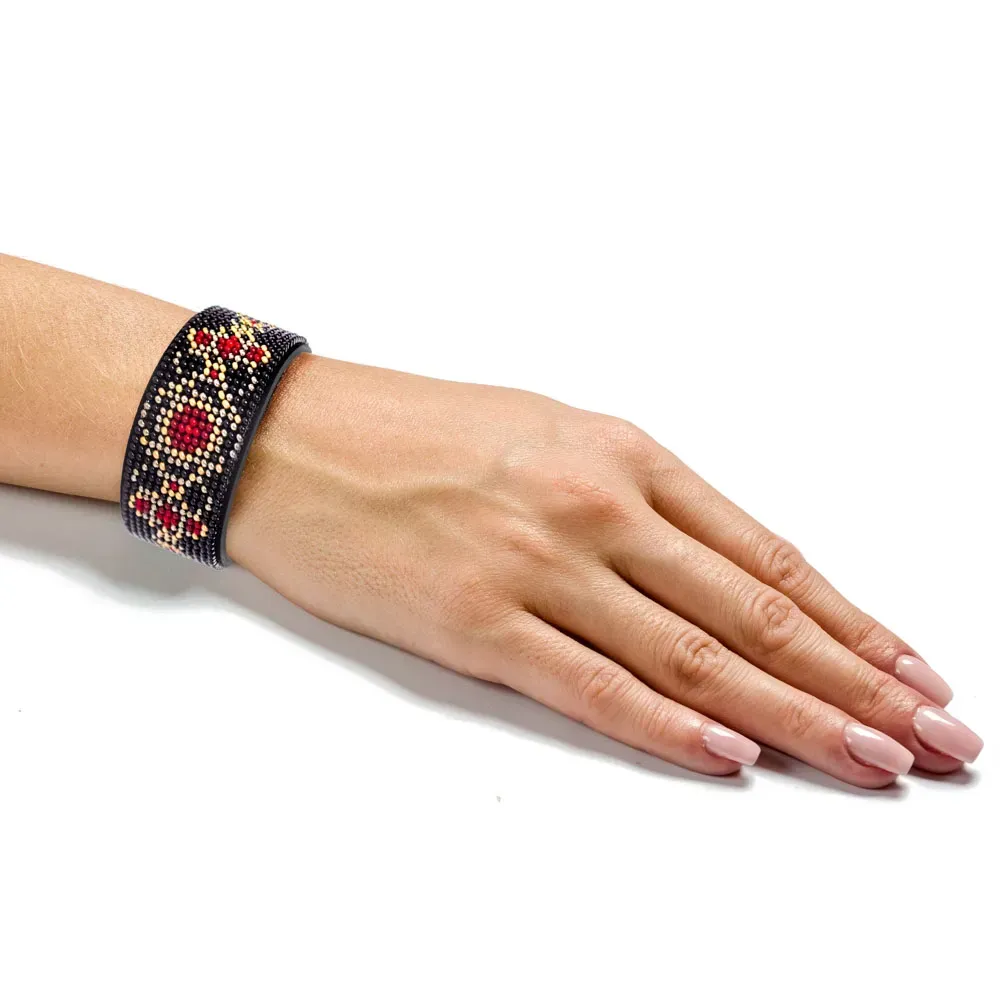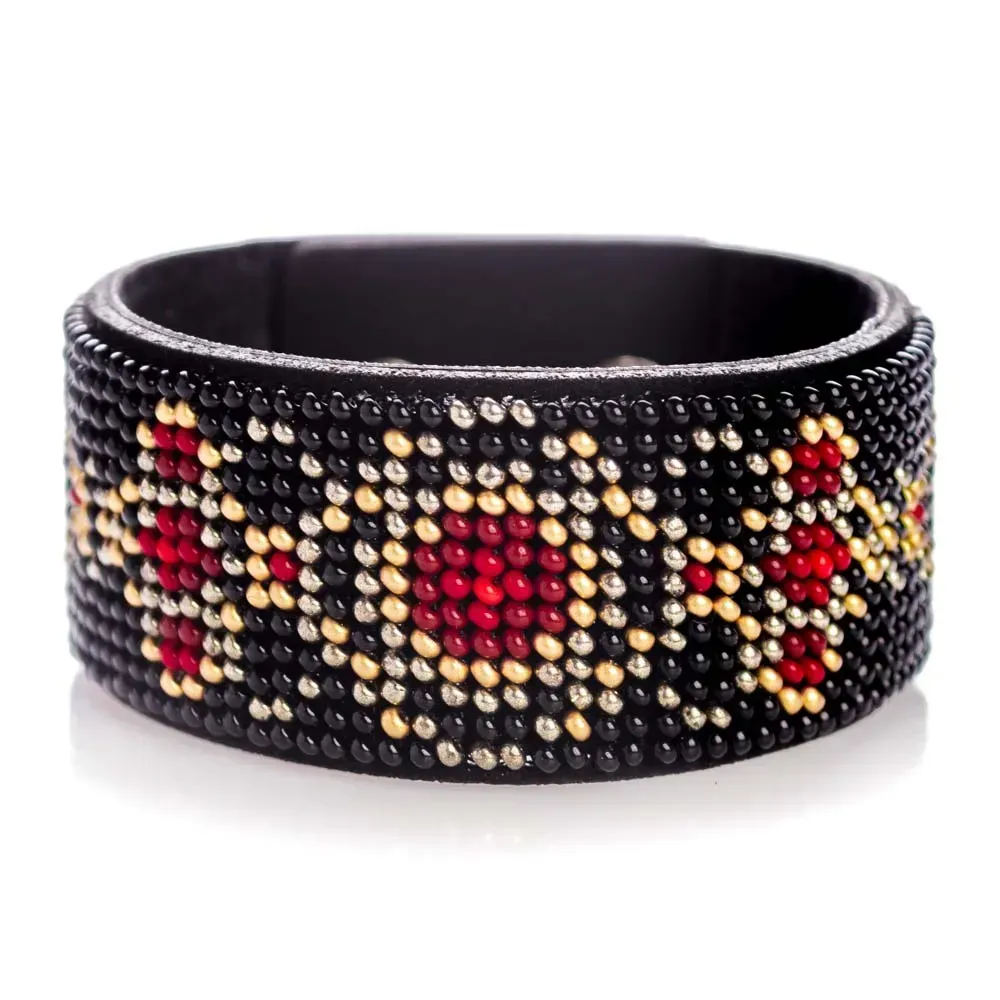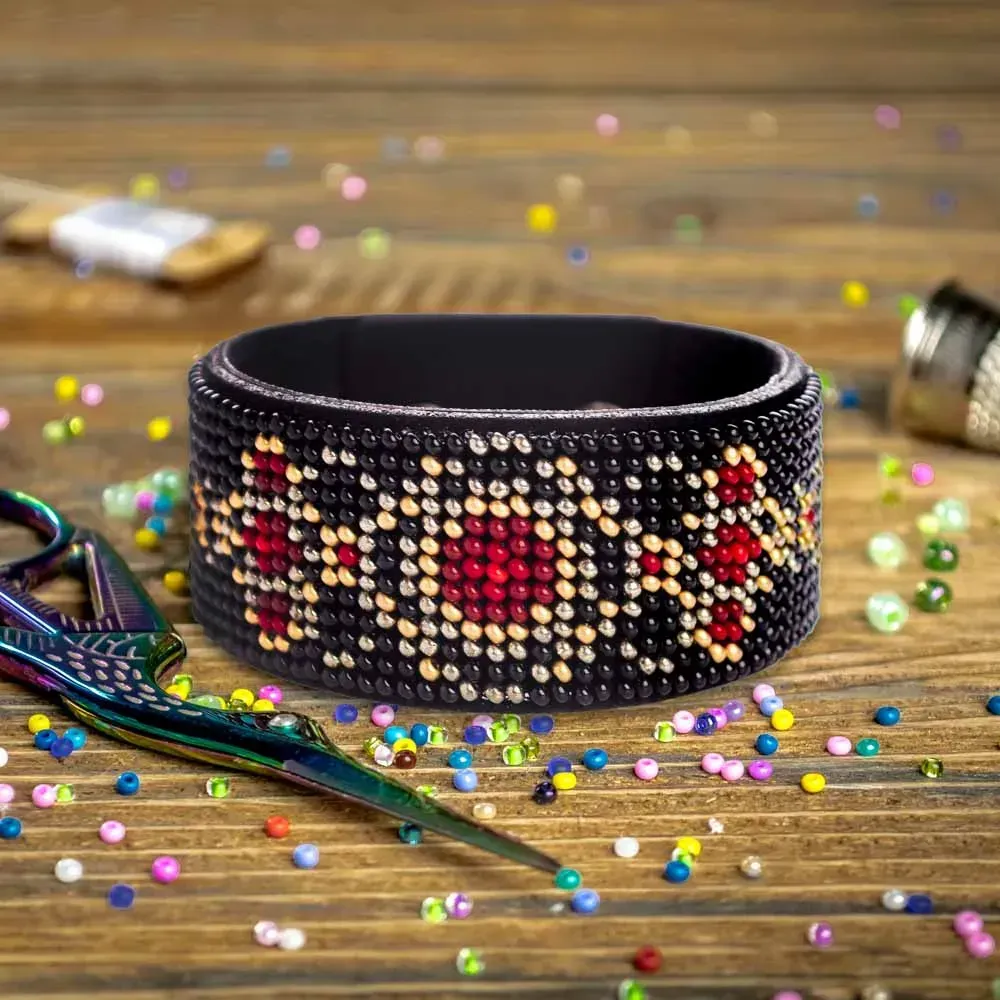When it comes to creating handmade jewelry, especially if you want to make an embroidery bracelet with beads, it’s important not only to choose beautiful beads but also to select the right base. The quality and comfort of the base determine not only the final appearance but also how pleasant the bracelet will be to wear, how long it will last, and how easy it will be to work with during the embroidery process.
Commonly Used Materials
Several types of materials are most often used for bead embroidery bracelets. Each has its own characteristics:
- Felt — one of the most popular options. It’s soft, easy to work with, holds its shape well, and doesn’t fray at the edges. It’s often used for dimensional embroidery.
- Faux leather — a dense and durable material. It’s ideal for sleek, minimalist bracelet designs. It’s important to choose high-quality faux leather so it doesn’t crack over time.
- Genuine leather — expensive, but very durable and elegant. Commonly used in premium jewelry pieces.
- Plastic or metal base — used as a frame over which fabric or leather is stretched.
- Special pre-made bracelet blanks — ready-to-use forms that can be embroidered with beads right away. They save time and simplify the process.

What to Consider When Choosing a Base
Not all bases are equally comfortable or suitable for every design. To make the right choice, consider the following:
- Thickness — too thick and the bracelet may be uncomfortable to wear; too thin and it may deform under the weight of the beads.
- Flexibility — the base should conform to the shape of the wrist while still holding its form.
- Color — it should harmonize with the beads or be neutral.
- Ease of piercing — for hand embroidery, it’s important that the needle can pass through without too much effort.
- Durability — especially important if the bracelet will be worn often.
Tips for Choosing a Base for Different Bracelet Styles
If you’re just starting out with an embroidery bracelet with beads, it helps to think about the style of the finished piece. Examples:
- For richly decorated bracelets with many stitches and volume, choose thick felt or a base with a backing layer.
- Minimalist and smooth designs look great on faux or genuine leather.
- For children’s bracelets, soft and lightweight materials like thin felt or fabric with adhesive interfacing work best.
- If you want a stiff cuff-style bracelet that holds its shape, go with a plastic base to cover with fabric or leather.

What You Should Know Before Buying
Before choosing a material, consider whether you’ll be sewing by hand or using a machine, how experienced you are with bead embroidery, and what kind of result you want to achieve. It’s also good to plan in advance whether you’ll be using a lining, closures, or reinforcement layers.
Quick tips:
- Don’t skimp on quality — a poor base will ruin the whole result.
- If unsure — start with felt; it’s a versatile choice.
- Choose a more durable base if the bracelet is meant to be a gift.
- Test different options — buy a few samples and try them out.
A well-chosen base is already half the success in creating a beautiful and long-lasting embroidery bracelet with beads. It’s better to spend a little time selecting it than to be disappointed later. Beginners are better off starting with universal and easy-to-use materials, and as they gain experience, they can explore more complex and expensive options. Most importantly — don’t be afraid to experiment, as the best ideas and most beautiful jewelry pieces often come through practice.


